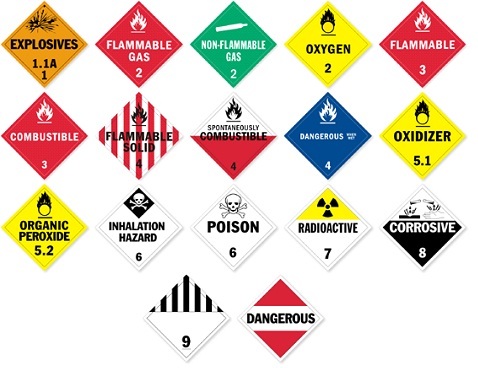When shipping hazardous materials (hazmat) of any type, company representatives must have a strong understanding of the products they are attempting to ship and the federal requirements that govern the domestic and international transportation of hazardous material. Including it’s risk to shippers and contingent liability for manufacturers.

Regulations for the transport of hazardous materials are comprehensive and somewhat complex. Maintaining a strong understanding of these regulations and potential pitfalls of hazmat transportation is critical to the safe and successful handling and delivery hazmat materials and protection of the transporter’s brand.
There is an old saying that “The only bad press is your obituary.’’ This may not apply in the transportation of hazmat products. Front page news of a hazmat breach while in transit could very well be the obituary for a company’s brand. Just ask Exxon about a little oil spill in Alaska.
Understanding Direct Risk to Shippers and Contingent Liability for Manufacturers
In 1990, Congress enacted the Hazardous Materials Transportation Uniform Safety Act (HMTUSA) to clarify the maze of conflicting state, local and federal regulations. HMTUSA requires the Secretary of Transportation to promulgate regulations for the safe transport of hazardous material in intrastate, interstate and foreign commerce. The Secretary also retains authority to designate materials as hazardous when they pose unreasonable risks to health, safety or property.
Enjoying our insights?
Subscribe to our newsletter to keep up with the latest industry trends and developments.
Stay InformedCompanies that are engaged in the transportation of hazardous material should have a defined hazmat packaging and transportation program ensuring that the company or hired carriers maintain current hazmat authority. They also must have appropriate insurance, confirming drivers have hazmat endorsements, and provide training for employees who have access to any part of the hazardous material.
Knowing the rules for hazmat transportation and packaging requirements is the first line of defense for a company’s reputation. Toward this end, drivers should clearly identify the type and classification of their product line that is considered hazardous and fully understand the packing requirements associated with each product.
Hazardous Materials
Classifications
Hazard classes separate material by the type of risk a hazard they may pose. Some materials meet the definition of more than one hazard class with primary risks and subsidiary risks.
When deciding on packaging requirements it is a good practice to meet the requirements of the most hazardous class the material may fit. The chart below provides a general summary of hazardous classes.
Class 1: Explosives
Class 2: Gases
Class 3: Flammable and combustible liquids
Class 4: Flammable solids, spontaneously combustible materials, dangerous when wet materials.
Class 5: Oxidizers and Organic Peroxides
Class 6: Toxic Materials and infectious substances
Class 7: Radioactive materials
Class 8: Corrosive materials
Class 9: Miscellaneous dangerous goods
Packing Groups
Packing groups indicate the degree of risk a hazardous material may pose in transit. A can of paint, for example, must be able to withstand a free fall from 48 inches without spilling open.
The more potentially dangerous the material to humans and the environment, the more restrictive is the packaging requirements. For detailed packaging requirements refer to CFR 49-173.
Packing Group I – High danger
Packing Group II – Moderate danger
Packing Group III – Low danger
Packing groups are always represented by Roman numerals and determine the type of packaging required for the materials as well as quantity limits allowed on a particular vehicle.






















